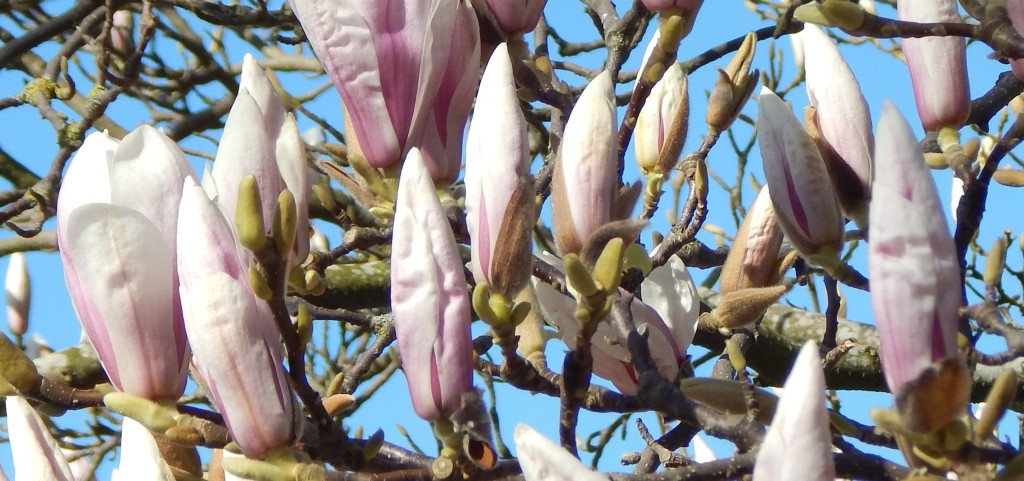
[218] Magnolia x soulangeana, Magnolia
Introduction
Magnolia x soulangeana, normally just called Magnolia, is a very popular tree grown in gardens for its magnificent pink Spring flowers. They last for a few days and for the rest of the year the tree may be unnoticed.
This hybrid is the most common version of Magnolia and may be called Saucer Magnolia, but other species and varieties are sometimes cultivated. All two hundred species of the genus Magnolia may have the common name Magnolia (not surprisingly.)
Taxonomy
Kingdom – Plants
Division – Vascular Plants
Class – Angiosperms (Flowering Plants, sometimes called Magnoliophyta with a subclass Magnoliopsida)
Clade – Core Angiosperms, Mesangiospermae
Subclass – Magnoliidae or Magnoliids
Order – Magnoliales
Family – Magnoliaceae
Subfamily – Magnolioideae
Tribe – Magnolieae
Genus – Magnolia
Scientific Name – Magnolia x soulangeana
Magnolia liliiflora x Magnolia denudata
Other species, hybrids and cultivars are grown. See text.
Name
Some names are so obvious that I say nothing and I expected this genus to be named for its magnificent flowers. But it isn’t. Pierre Magnol (1638-1715) was a prominent botanist from the city of Montpelier in France. One of his main contributions was the invention of families in the classification of species (some time before Linnaeus.) The first Magnolia found on the island of Martinique, was named after him by Charles Plummer (1646-1704) another French botanist who explored the West Indies.
The hybrid gets its name from its originator – see below.
Dicotyledons
We met Monocots in [016] Wild Garlic. Before the days of DNA analysis, plant taxonomy the classification of plants was based on some apparent distinctions and the top level for flowering plants was to divide them into Monocots and Dicots. (You will remember that this is based on whether the initial shoot from the seed starts with one or two leaves.)
All Angiosperms were called Magnoliophytes. Monocots were Liliopsida; and Dicots were called Magnoliopsida. So, the Magnolia was a defining species for the whole of the Dicots.
With scientific DNA analysis, this is now seen as out-of-date because the Dicot clade is paraphyletic. The extant Angiosperms are now split into eight groups, only one of which is the Monocots. Magnoliids is one of the other groups, a relatively small group.
The group of Angiosperms is still sometimes called Magnoliophytes, retaining the Magnolia as a type species, but the term Angiosperms is more generally used.
[I normally call Angiosperms a Class but there is some uncertainty as to its level in the tree of life.]
Magnolia
Lower down the taxonomic tree, there is no general agreement on classification within the family Magnoliaceae and it is now considered to contain just two genera – Magnolia, containing almost all the species, and [212] Liriodendron, the Tulip Tree, which we have seen recently.
The two hundred species of Magnolia may be classified into subgenera, sections and subsections.
The genus is thought to predate the existence of bees (about a hundred million years ago) and plants could have been pollinated by beetles. It has a tough flower structure with petals and sepals combined. Most of its species come from southeast Asia with others in parts of the Americas.
They have large bowl-shaped or star-shaped flowers, which emerge before the leaves of deciduous species.
Saucer Magnolia
Magnolia × soulangeana was initially bred by Étienne Soulange-Bodin (1774–1846), a retired cavalry officer who crossed Magnolia denudata with Magnolia. liliiflora in 1820. The hybrid spread across Europe, and elsewhere now many named horticultural varieties and cultivars are grown.
Both of the parent species are native to parts of China and have been cultivated for centuries in China and Japan. Both are in Subgenus Yulania, Section Yulania, Subsection Yulania. Magnolia liliiflora may be called Purple Magnolia or Red Magnolia or Japanese Manolia and generally has dark pink or purple flowers. Magnolia denudata, sometimes called Yulan Magnolia, has almost white flowers.
Like most Magnolia species, the Saucer Magnolia grows to a large ball-shaped tree. Even young trees at heights below two metres may produce lots of flowers
The large flowers that start some shade of purple-pink and become lighter as they open out. Often the base of the flower remains pink while the rest is almost white. It is deciduous and the flowers emerge in early spring. Cultivars have been bred for different colours but also have been selected to flower earlier.
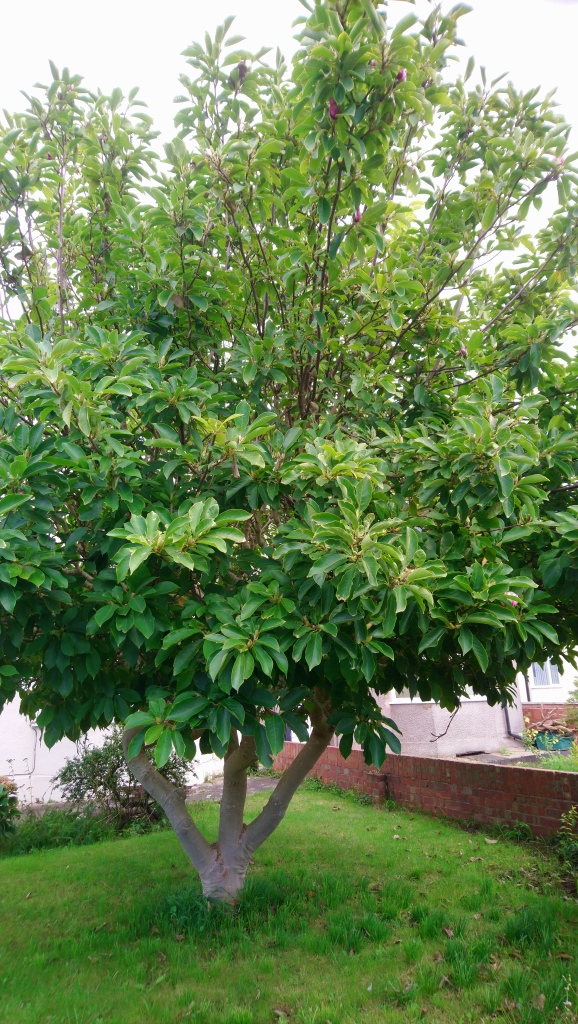









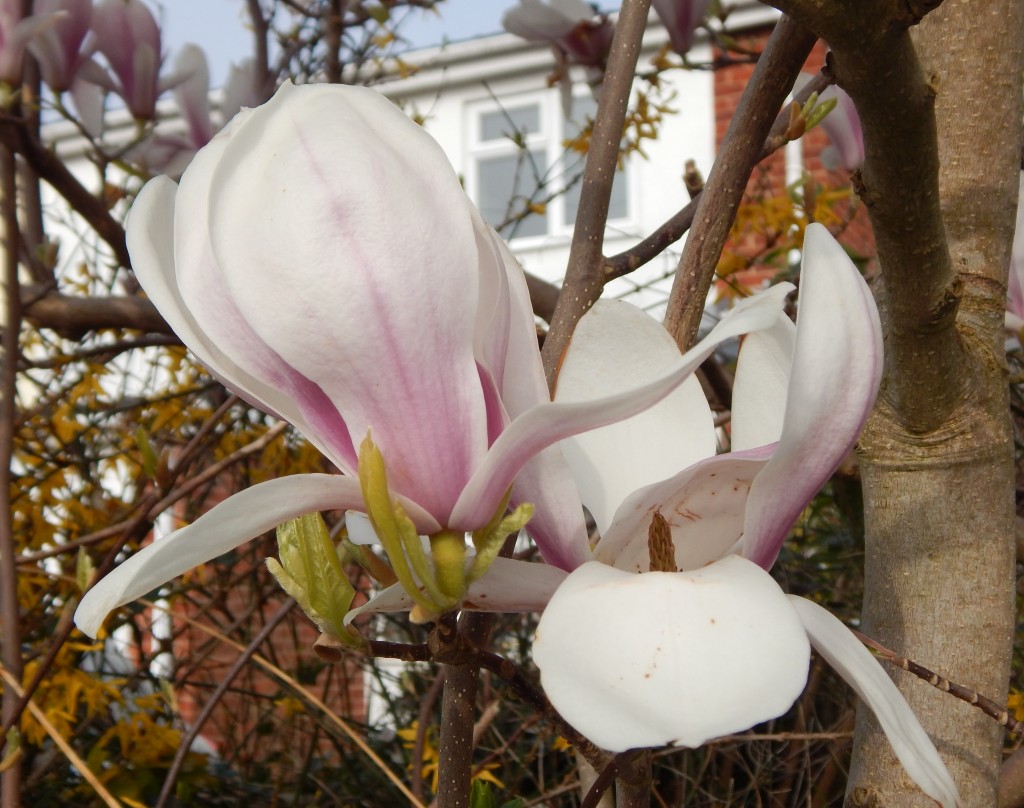

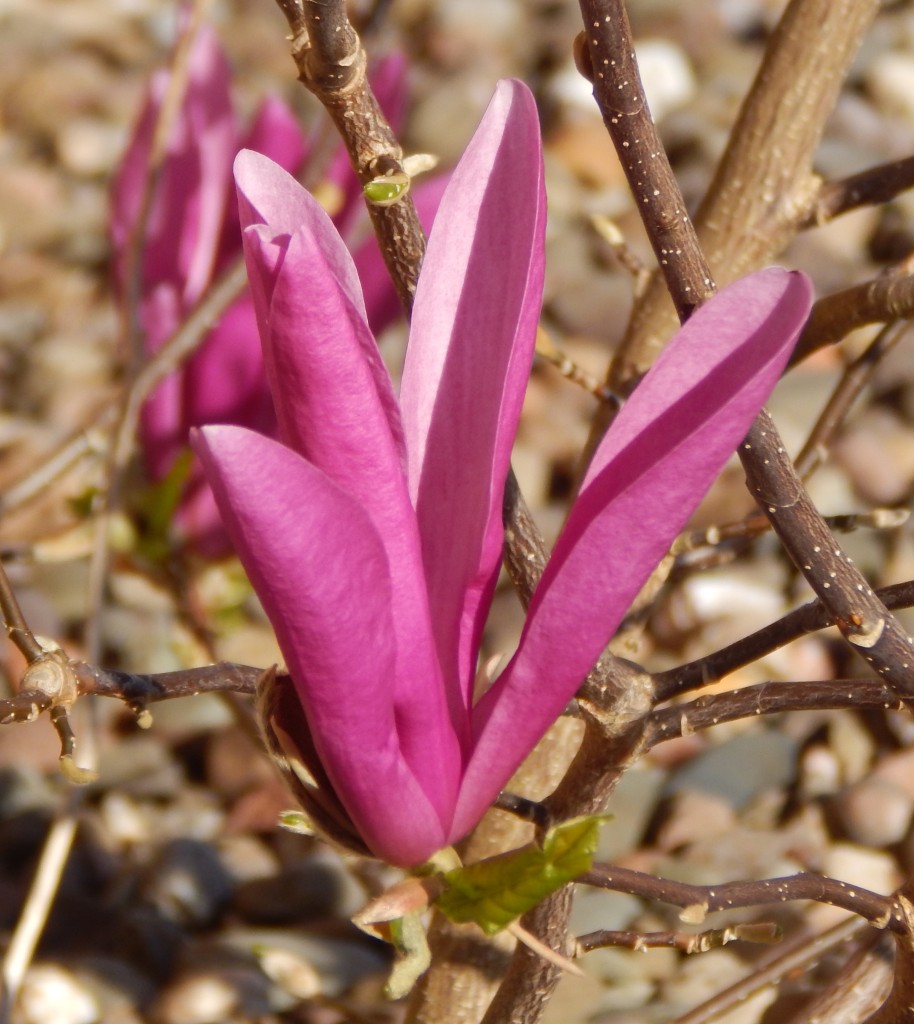

Habitat and use
Magnolia x soulangeana is by far the most common variety of Magnolia cultivated in England, mainly in the South. It is grown for its display of early flowers and has many cultivars.

See also
Magnolia stellata, the Star Magnolia. native to a small part of the island of Honshu in Japan, has open star-shaped flowers, usually white. It is cultivated as a garden tree and has several cultivars, some with pinker coloured flowers.


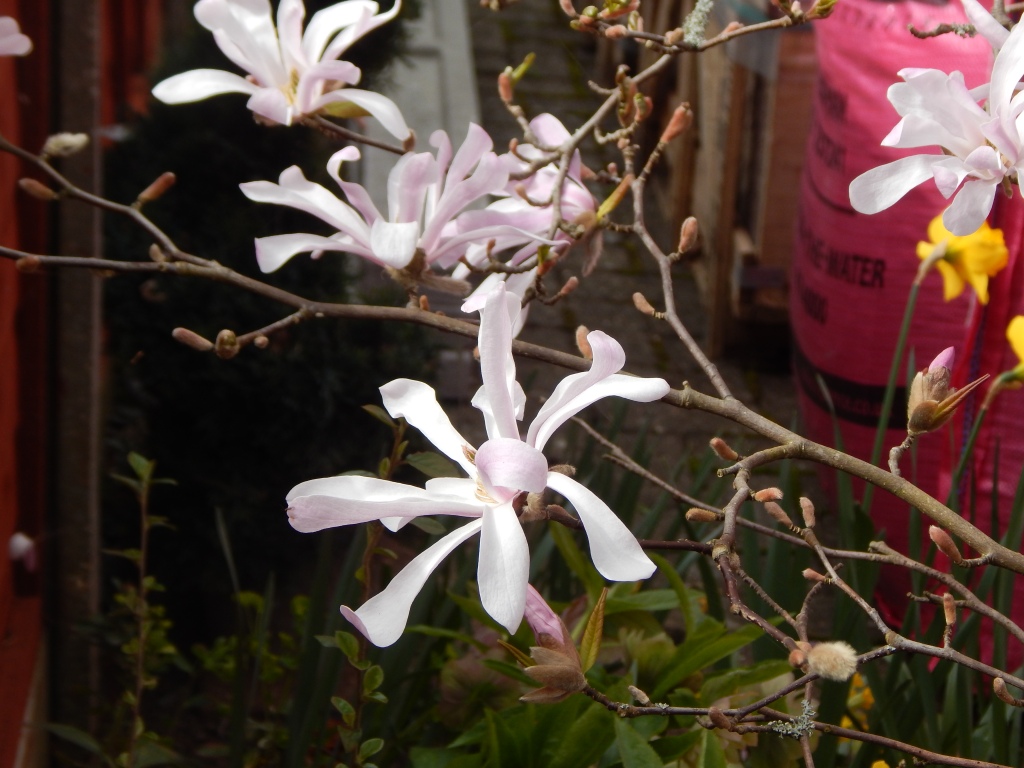
Magnolia acuminata, the Cucumber Tree (or Cucumbertree), is a large tree native to parts of North America. It has small and insignificant, yellow-green flowers. Its unripe fruits are green and vaguely similar to cucumbers. They mature to bright red or orange colours.
It is sometimes grown in streets or to provide shade. They grow typically to well over twenty metres in height so are not seen in small gardens. The species is also used to provide hybrids with yellow flowers.
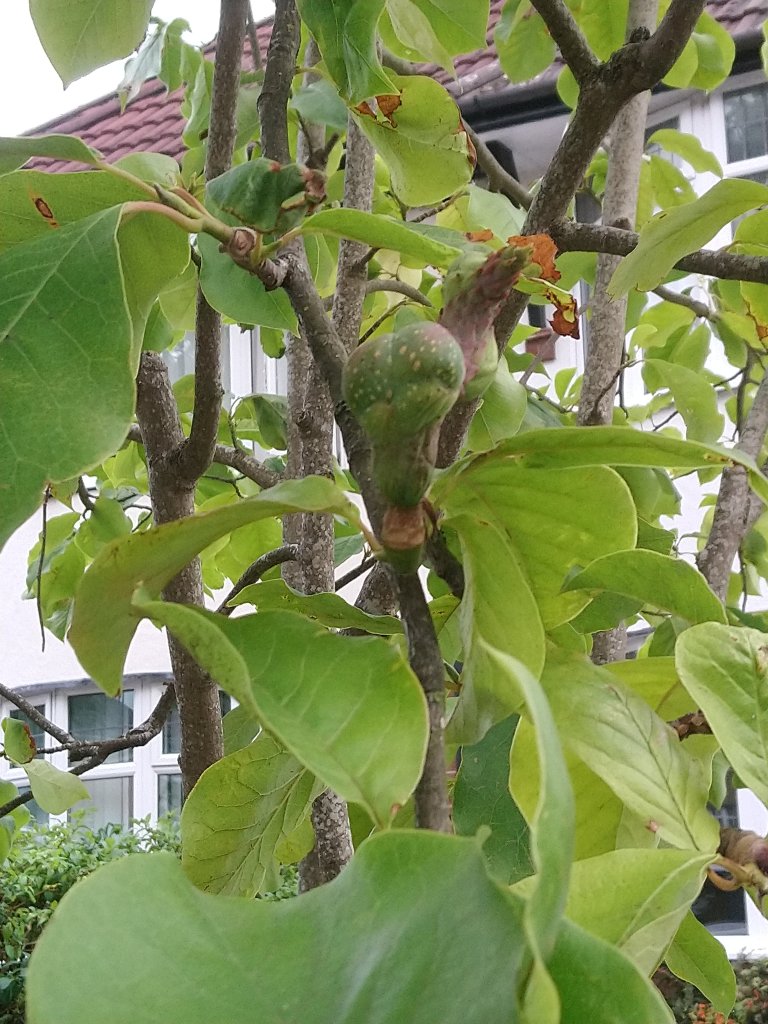

(It won’t surprise you that several other completely unrelated species are also called Cucumber Trees.)
